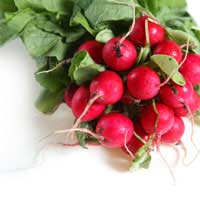
Planning is one of the most difficult aspects of growing your own. It’s easy to let that row of radish get oversized, or forget to harvest the fennel before it flops. To help you stay on top of things, here’s our print-and-keep guide for July-September.
July to September: PLANTING
Summer is a time for the vegetable gardener to slow down and enjoy the crops – some of the most wonderful fruit and veg are now becoming available. Make sure you take time to enjoy your hard work, have a picnic on the patch, or photograph some of your year’s successes. And don’t forget to store, preserve and freeze your crops (below)!
July:
- Carrots – continue sowing maincrop carrots for autumn and winter. ‘Autumn King’ is a reliable variety.
August:
- Cabbage – transplant young cabbages with protection against cabbage fly.
- Onion – if starting from seed, sow it now to produce sets for the spring.
- Radish – continue sowing summer radish, and start some winter radish too.
- Turnip – sow the final row for winter eating.
September:
- Spinach – sow a winter variety.
July to September: STORING AND FREEZING
Most of your work during these three months will be cropping, storing, preserving and freezing your harvest.
Strawberries and Raspberries – any that make it off the vegetable patch (rather than in your stomach) can be made into jam. Combine the two, or use strawberries with gooseberries or rhubarb for a different flavour.
Broad Beans – you’ll be finishing the pods now. If you have a glut, you have options: pod, blanch, shell and freeze them, or use the whole pods to make white wine at home!
Peas – as you come to the end of the peas, you may find pea moth starts to set in. So harvest the whole lot, then shell, blanch and freeze the healthy ones. If you’ve netted against pea moth, you can leave a few pods on the plants to dry out and provide you with seeds for next year.
Garlic – it’s ready when the leaves flop over. Dig up all of the bulbs and lay them on a sunny patio, or put them in wooden trays and keep on the lawn to dry out. The drier they are, the better they’ll store. Keep in a shed or on a garlic string.
Beans – French and runner beans are ready now. You can dry excess French (haricot) beans: just leave them on the plants, then shell and put into an airtight jar. Runner beans can be successfully frozen (chop and blanch briefly first) or pickled – a surprisingly good result! Try Delia’s recipe.
Beetroot – store excess beetroot in trays, packed with sand, and kept in a cool, dark place. Make sure you add a label so you know what’s in which tray.
Carrots – harvest when ready (check packet to see how long they will stand in the ground); if carrot fly strikes, lift all the roots immediately. Store healthy roots in trays with sand (see above). Peel and chop damaged roots, discarding the damaged pieces, and use to make a big batch of soup for the freezer.
Courgettes – if you have more than three plants, you’ll probably have a glut! Pick courgettes when they are very small for the best flavour and management. You can use the extra to pickle (an alternative to gherkins).
Fennel – pick as needed (and see our article on storing fennel).
Onions – dry thoroughly and store in nets in a cool, dark place.
